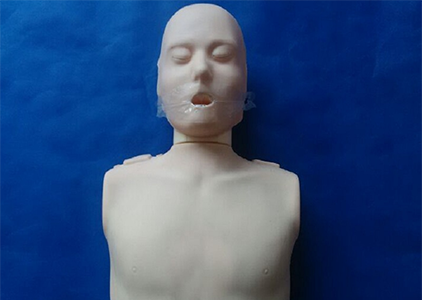
The cephalic appendicular artery model plays a vital role in helping to understand the intracranial vascular structure, and its unique advantages enable medical learners to grasp this complex and fine anatomical system more intuitively and deeply.

Firstly, the cephalic artery model accurately reproduces the complex layout of intracranial vascular network through highly simulated design. From the main blood supply arteries, such as the internal carotid artery and vertebrobasilar artery, to the anterior cerebral artery, the middle cerebral artery, and the posterior cerebral artery, the model is presented one by one, and maintains their relative position and direction in the real human body. This intuitive display enables learners to quickly establish the overall cognition of intracranial vascular structure and lay a solid foundation for subsequent in-depth learning.
Secondly, the vascular structure in the model is clearly distinguishable and rich in details. Learners can clearly see the branches, crossings and anastomoses of blood vessels and their relative position in relation to the surrounding tissue. This detailed presentation helps learners to better understand the connection between blood vessels and the blood flow path, and then master the basic principle of intracranial blood circulation.
In addition, the head-attached cerebral artery model also has the characteristics of touch and interaction. Learners can feel the texture and shape of blood vessels by touching the model, deepening the perception and memory of blood vessel structure. At the same time, some advanced models are also equipped with interactive features, such as lighting indications, animated demonstrations, etc., making the learning process more lively and interesting, easy to understand and master.
Most importantly, the cephalic appendicular artery model provides learners with a safe, risk-free learning environment. There are certain risks and difficulties in learning and studying intracranial vascular structure in real human beings, but the model completely avoids these problems. Learners can repeatedly observe, touch, and practice on the model without fear of harm or adverse consequences to the real human body. This safe learning environment helps learners to relax and focus on learning, thus improving learning effectiveness and efficiency.
In summary, the CEphalocephalic artery model provides learners with an intuitive, vivid and safe learning environment through its highly simulated, detailed, touchable and interactive characteristics, which helps them better understand the structure of intracranial blood vessels and master relevant knowledge. Both medical students and researchers engaged in neuroscience research can enhance their professional literacy and research ability through this model.







Sophie Asveld
February 14, 2019
Email is a crucial channel in any marketing mix, and never has this been truer than for today’s entrepreneur. Curious what to say.
Sophie Asveld
February 14, 2019
Email is a crucial channel in any marketing mix, and never has this been truer than for today’s entrepreneur. Curious what to say.